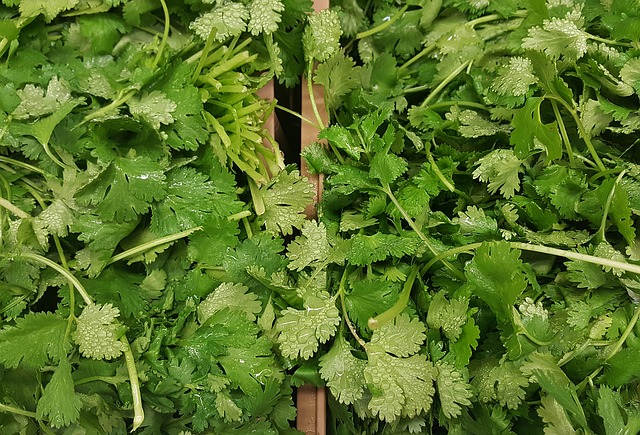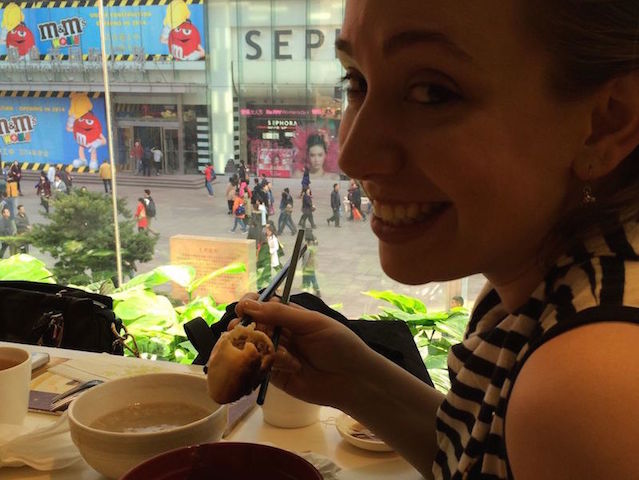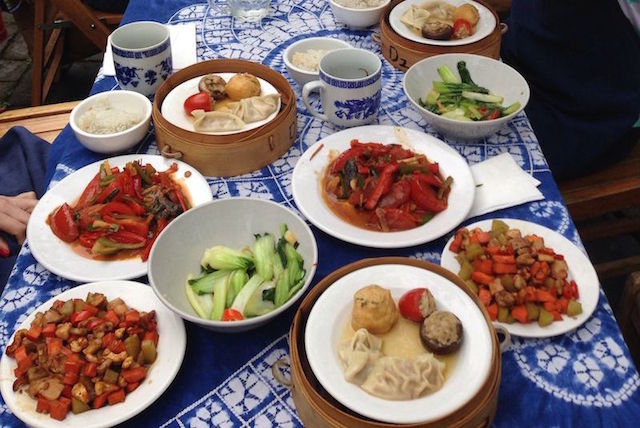Traveling Foodie: Exploring Yin and Yang Through Chinese Cuisine

This is the 4th installment in my Traveling Foodie series, where I share my encounters with culture and food around the world.
Before traveling to China, my only exposure to Chinese food had been of the American-Chinese variety, with the trusty standards of crab rangoons and General Tso’s chicken. So when I started working with international students, many of them Chinese, one of the first teasing questions I would ask them was, “So, what do you think of the Chinese food here in America?” “Ugh!” they would groan, or giggle, and assure me that it was NOT Chinese food, and to come to China and try it for myself.
I began to understand the concept of yin and yang, but it wouldn’t fully sink in until I actually experienced it myself in China.
So I did.
Between conversations with my students, a cooking class in Yangshuo, China, and eating my way through Shanghai and Beijing, I learned the basics of Chinese cooking… and gained some mad chopsticks skills in the process.

Lesson # 1: Everything. Must. Be. Hot.
This is the first commandment of Chinese cuisine, or at least the first one I learned. As a college administrator I worked with hundreds of Chinese students over the years, and learned pretty quickly that the quickest way to elicit complaints from a Chinese student was to serve her cold and/or raw food. Sandwiches? Forget it. Salads? Heavens, no! But the Chinese preference for warm food goes beyond questions of taste and temperature, as I learned when chatting with one of my female Chinese students.
I apologized for the cold-cut sandwiches I’d provided for our picnic, because I knew that, like most Chinese, she preferred her dishes warm.
“It’s ok,” she assured me. “I’ve gotten used to it.”
When I asked her to explain to me more about her preference for warm food, she explained about balance, and yin and yang. The body is warm, and therefore you should only put warm things into it. Putting cold things into it will disrupt the harmony of the body, and cause sickness.
This is especially true, she confided, when a woman is on her period. Fascinated, I asked her to explain. During menstruation, she explained, a woman’s body is particularly vulnerable. She must take care not to even drink cold water during this time, and eat only soft, warm foods. Women should also not swim in cold water at this time, for the same reason. (In fact we had had a problem with this at the women’s college where I worked, as several Chinese students refused to go in the pool during their swimming class for this very reason, and the instructor was at a loss as to how to grade them!) I began to understand the concept of yin and yang, but it wouldn’t fully sink in until I actually experienced it myself in China.
Lesson #2: Everything cooks fast!
“Oyster sauce! Soy sauce! Stir stir stir! Now flame off, and lid!” Whew. Is Chinese cooking always this frantic? I wondered, as I quickly dumped my cashew chicken into a dish and slammed a lid onto it, lest it become cold and therefore inedible, as one should never consume cold food if one can help it (see Lesson #1).
My travel buddy Alyssa and I were well into our second week in China, and we were marking the occasion with a Chinese cooking class in Yangshuo, a dream-like town in the mountains of Guangxi Province. So far we had stuffed dumplings and vegetables and set them to steam, sautéed bok choy (admittedly my least favorite vegetable), and made two classic local dishes: Eggplant Yangshuo and Beer Fish. And somehow, despite our cooking class being outdoors in the middle of March, it was essential that the food remain warm.
This was helped by the fact that everything we were making cooked so darn fast. This was a hallmark of Chinese cooking, as our instructor explained, due to a historical scarcity of cooking fuel in China. No long-simmered stews here; everything cooked in 5-10 minutes, leading to quite a frenzied cooking lesson! But this was a very economical way to cook, both in terms of time and resources, and it ensured that more of the nutrients remained in the food. My American sensibilities still balked at lesson #1 (everything. must. be. hot.) but lesson # 2, I could get behind.

Lesson #3: Balance is essential.
On my final day in China, I met up with some former students in Beijing, and they took me to a hidden gem, a hutong-turned-restaurant in Beijing. Hutong are the very old, stone dwellings that make up some historical neighborhoods in Beijing. The remaining few are quite precious, as the government has torn down most of them to make way for new construction. But this one remains intact, and some enterprising chef turned it into a restaurant, where I spent one of the most memorable evenings of my travels with three young Chinese women. Over simple, delicious fare, we talked about life, politics, and crossing cultures. They giggled at my chopsticks skills (which I had been quite proud of until then), and I fell in love with the tea I was served at the restaurant.
It was pu’erh tea (pronounced “pwarh”, not “poo-air”) with dragonfruit and wolfberry. I kept asking for refills, I was so enamored.
“This is very good tea for women,” my informants explained. “It is very yang (masculine), so it provides good balance for women (yin).” And once more we were back to the idea of balance, yin and yang. I still didn’t totally get the concept of what things counted as yin and yang, much like how the concept of gender for nouns in French always baffled me.
But I appreciated the importance of balance, just as my French host mother often intoned, regardless of the cultural definition. And I also appreciated my cultural informants, who were only too happy to take me to a local grocery store and help me find the ingredients to recreate the tea at home, which I am still doing to this day. I am happy to report that I am feeling very balanced, indeed.

Traveling Foodie: Exploring Yin and Yang Through Chinese Cuisine photos by Pixabay and Rachel Romesburg Rice.









One thought on “Traveling Foodie: Exploring Yin and Yang Through Chinese Cuisine”